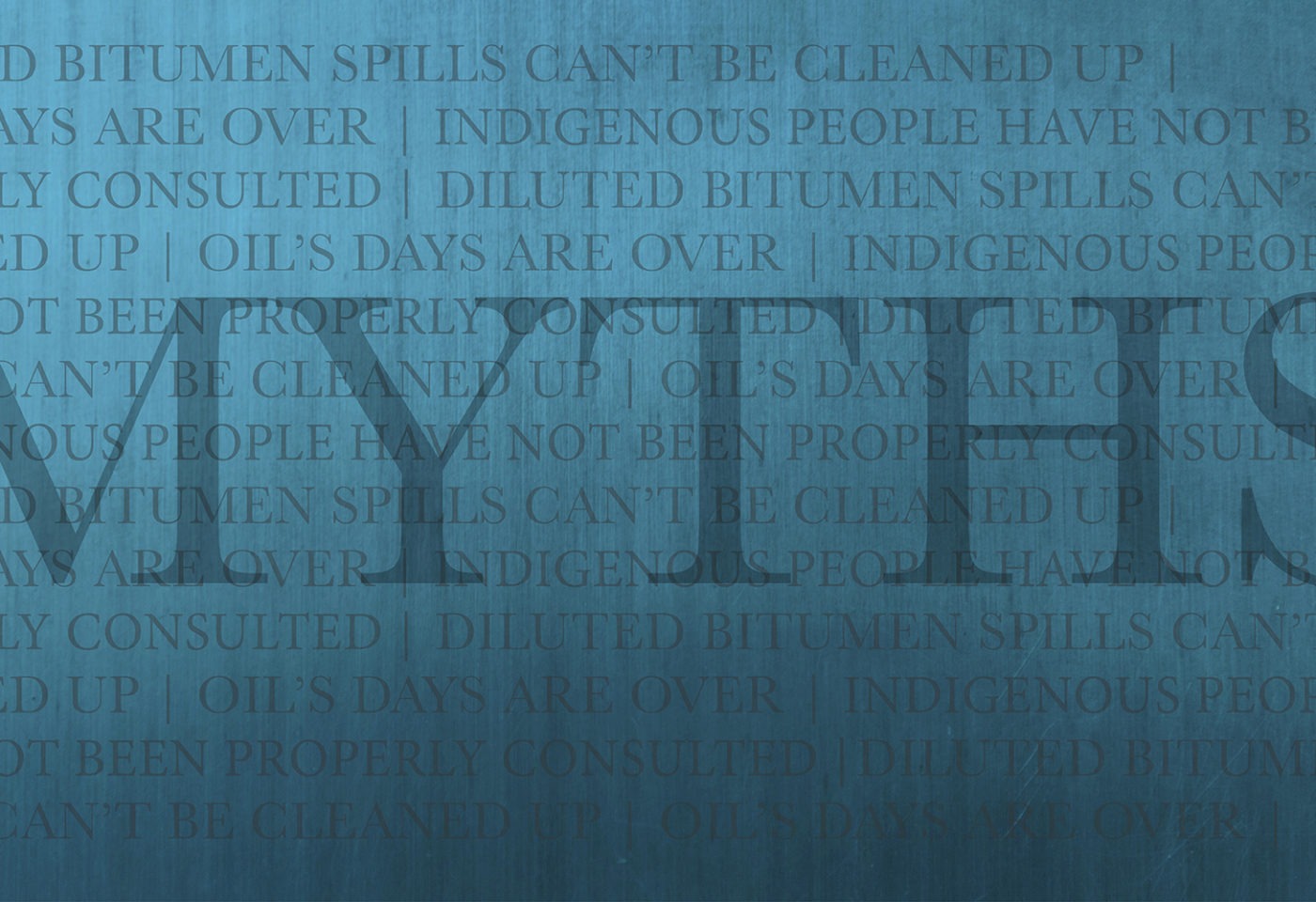By Colleen Collins
Published in the Hill Times
May 24, 2018
The good news is that the Senate just passed a bill to declare the Trans Mountain pipeline project to be “for the general advantage of Canada.”
But the not so great news is that the record of the debate shows that some myths are still out there which anti-pipeline folks like British Columbia Green Party leader Andrew Weaver and B.C. Premier John Horgan are using and indeed perpetuating. These myths don’t hold up under the evidence. As the Trans Mountain debate heads to a crescendo with Kinder Morgan’s May 31 ultimatum, and with the bill off to the House of Commons, it’s time for some myth-busting for Senators, MPs, and all Canadians.
Myth 1: Diluted bitumen spills can’t be cleaned up
Scientists at the CanmetENERGY laboratory, which operates within Natural Resources Canada, presented their research to the Senate Committee on Transport and Communications in September 2017. What they found was that diluted bitumen, or dilbit, can indeed be cleaned up. In fresh water, even with sediment, like the Fraser River, and in saltwater, similar to the Burrard Inlet, dilbit floats longer than regular crude. That makes it easier, not harder to recover.
Trans Mountain’s research report, which is known as the Gainford, Alta., study and was submitted to the National Energy Board in 2013, also found that existing technology could recover weathered dilbit.
Pipeline critics like Mr. Weaver point to a 2015 Royal Society of Canada report to bolster their claims that dilbit can’t be cleaned. Except that the Royal Society Report does not say that dilbit spills cannot be cleaned up. It called for more research, especially in the Arctic, which is being undertaken.
Another favourite target is the 2007 pipeline rupture (caused by a backhoe) in Burnaby, B.C., which spilled 1,000 litres of synthetic crude in the Burrard Inlet.
What critics fail to note is that 95 per cent of the synthetic crude in that case was recovered, according to an independent engineering firm. In the 2010 Kalamazoo River pipeline spill in Michigan, which involved diluted bitumen, recovery was easier than with regular crude spills because the dilbit didn’t mix with the water. More than 85 per cent of the oil was recovered, only 200 fish died, and in the following year, there was no ongoing impact on fish, according to the Natural Resources department’s submission to the Senate. Clearly, not the environmental “disaster” that Mr. Weaver describes in his website. He claims that only five to 15 per cent of oil spilled can be recovered, and environmental impacts last for years. These claims are not backed by current evidence.
The Trans Mountain marine terminal on the Burrard Inlet has operated for more than 60 years without a single spill. Spills that have occurred in the inlet have been from fuel barges (the kind that transport the energy used by the Green Party leader’s constituents on Vancouver Island) and grain tankers–not the oil tankers that have been operating since 1956. With the major spill recovery improvements planned by the federal government, the future should be even safer. The Royal Society report also referenced the improved safety record of modern double-hulled tankers.
Myth 2: Oil’s days are over
For all the excitement over electric vehicles, and worldwide spending of $2.9-trillion on renewable energy sources, the market share for oil and gas is steady at just under 60 per cent, according to data from the International Energy Agency. Peter Tertzakian, an economist and executive director of Calgary-based ARC Energy Research Institute, describes the situation as an “era of energy diversification,” where alternative sources to fossil fuels, notably renewables, are growing alongside—not at the expense of—the incumbents. Energy demand continues to grow around the world, with world oil consumption set to top 100 million barrels of oil per day within a year, writes Tertzakian.
Those who don’t trust energy forecasts use Norway’s sovereign wealth fund divesting its fossil-fuel holdings to support the claim that oil’s days are over. In fact, this isn’t a sign that Norway is running scared–it’s just sound investment strategy to diversify the country’s overall financial exposure to price fluctuations in fossil fuels. Oil and gas revenue created its sovereign wealth fund, and it continues to contribute more than 14 per cent of government revenue. Investing that fund into oil and gas equities is really putting all the country’s eggs in one basket, and that’s something no smart oil and gas jurisdiction, including Alberta, wants.
The divestiture by multinationals in Canada’s oilsands is also used as harbinger of the collapse of oil and a reason not to build the Trans Mountain pipeline. In fact, just the opposite is true. The cause of this divestiture is a lack of pipeline capacity. The discount received for Western Canadian Select’s heavy crude reached more than $30 per barrel this spring. That’s what’s hurting investment. Delays in getting this pipeline built are costing Canadians billions, handing extra profits to Americans and destroying investor confidence in Canada–and not just the oilsands.
Myth 3: Indigenous people have not been properly consulted
Trans Mountain’s consultations with Indigenous people included 30,000 points of contact with Indigenous communities, according to the project website. Kinder Morgan provided more than $13 million in funding to Aboriginal communities to conduct traditional land or marine-use studies, and participate in traditional ecological knowledge studies and other types of community-designed research. This consultation is in addition to the 83 Aboriginal groups on the Crown consultation list that participated in the National Energy Board hearing, either individually or as part of a collective. This process has led to mutual-benefit agreements with 43 Indigenous communities, including 33 in B.C.
It’s long past time for debate on this issue–but for those who are not aware of what’s actually been going on, hopefully, some facts will relieve their fears.
– Colleen Collins is the vice-president at the Canada West Foundation
